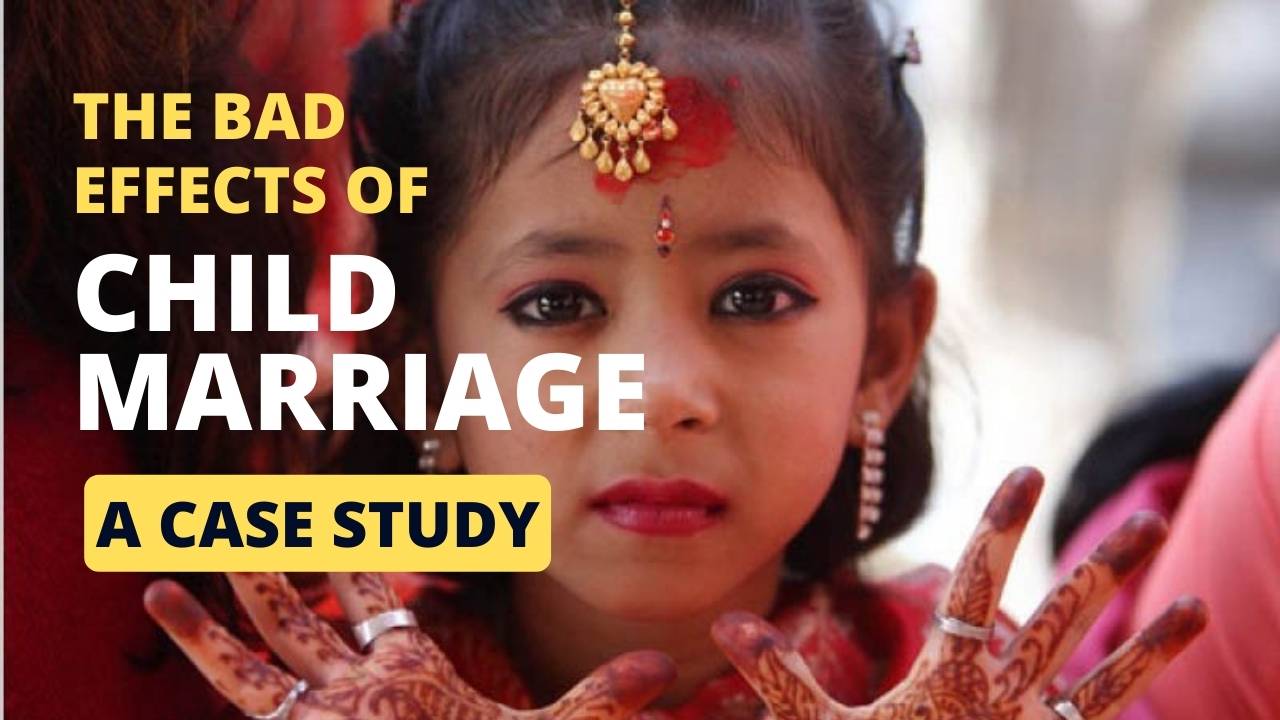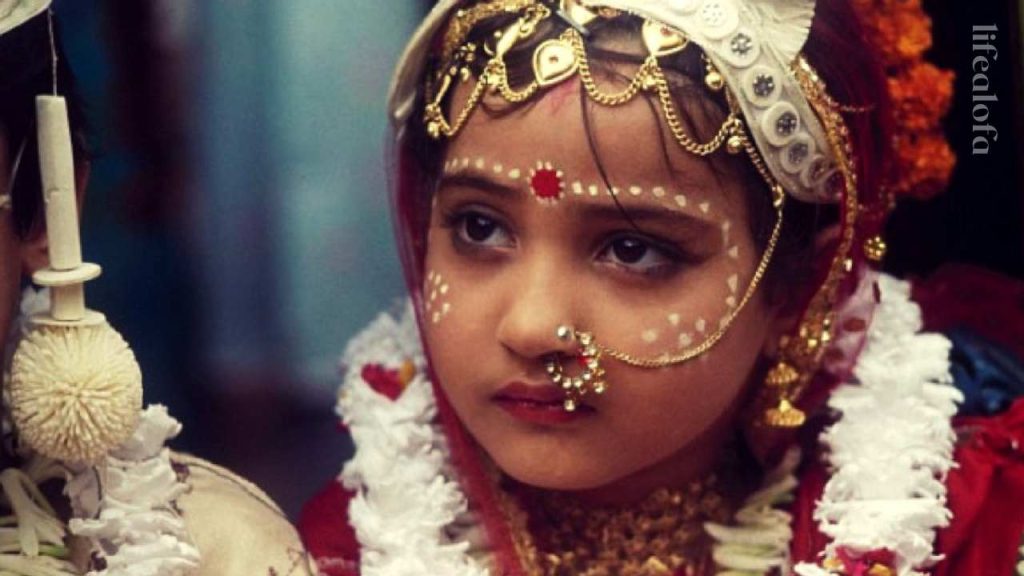The Bad Effects of Child Marriage: A Case Study

Child marriages have been happening for centuries worldwide, and only in recent years have developed countries begun to legislate against the practice. According to the United Nations, child marriage is any formal marriage or informal union where one or both parties are below the age of 18. The practice is most common in South Asia and sub-Saharan Africa, where it is often motivated by cultural traditions, poverty, and a desire to provide financial security for girls.
Child marriage can have a number of negative consequences for both the girls who are married and their children. Girls who are married at a young age are more likely to drop out of school, experience higher levels of domestic violence, and have difficulty accessing healthcare. They also have a higher risk of maternal mortality and their children are more likely to be underweight and stunted. In addition, child marriage can have a negative impact on community development and economic growth.
To learn more about the bad effects of child marriage, keep reading!
Why Does Child Marriage Happen?
Child marriage is a global problem that affects millions of girls every year. Child marriage happens when a girl is forced to marry someone who is much older than her. This can happen for many reasons, including poverty, traditions, or the desire to control a girl’s sexuality.
Child marriages are often arranged by the parents or other family members of the young girl. In some cases, the girl may be promised to the older man in exchange for money or other favors. Child marriage is harmful to girls in many ways.
It deprives them of their childhood and their right to choose who they want to marry. It also increases their risk of suffering from domestic violence, poverty, and poor health. Girls who are married as children are also more likely to drop out of school and have difficulty finding work as adults.
There are many ways to prevent child marriage from happening. One way is to educate people about the harm it causes and why it should be stopped. Another way is to provide financial support to families so that they can keep their daughters in school instead of marrying them off.
5 Effects of Early Marriage
Like most people, you probably think of early marriage as only happening in developing countries. But early marriage is a global problem affecting millions of girls worldwide. Here are five effects of early marriage:
1. Early marriage often means an end to a girl’s education. In many cultures, once a girl gets married, she is no longer allowed to go to school. This means that she misses out on critical years of education that could help her lift herself and her family out of poverty.
2. Early marriage can lead to health problems for both the mother and child. Girls who marry young are more likely to experience complications during pregnancy and childbirth due to their bodies not being fully developed. This can also lead to lifelong health problems for the mother and child.
3. Early marriage increases the risk of domestic violence. Sadly, domestic violence is too common in marriages where one or both partners are under 18. These marriages are often based on power dynamics rather than mutual respect and equality.
Health Consequences of Child Marriage
Every year, millions of girls worldwide are forced into child marriage. This harmful practice denies them their childhood, subjects them to violence and abuse, and puts them at risk of early pregnancy and health complications. Child marriage violates human rights and has devastating consequences for girls’ lives.
Around the world, child marriage is most common in sub-Saharan Africa and South Asia. In these regions, cultural norms and poverty fuel the practice. In some cultures, child marriage is seen as a way to protect girls’ virginity or ensure their financial security.
But in reality, child marriage robs girls of their childhoods and exposes them to immense risks. Girls who are married as children are more likely to experience domestic violence than their unmarried peers. They are also at greater risk of contracting HIV/AIDS and other sexually transmitted infections (STIs).
Child brides often drop out of school and have little power within their marriages – they are often treated as property by their husbands and in-laws. As a result, they are more likely to live in poverty. Child marriage also has serious implications for girls’ health.
Pregnancy carries far greater risks for teenage girls than it does for older women – each year, tens of thousands of teenage girls die from complications related to pregnancy or childbirth. Girls who marry young are also more likely to suffer from fistula, an injury that occurs during labour when the baby’s head pushes through the birth canal before the mother’s body is ready. Fistula can cause lifelong incontinence and social isolation.
Child marriage must be ended if we are to achieve gender equality and empower all girls and women around the world. We must work together – governments, civil society, families, communities, faith leaders, and traditional leaders – to end this harmful practice.

Effects of Child Marriage in India
Child marriage is a pressing issue in many parts of the world, including India. According to UNICEF, about 27% of women in India were married before their 18th birthday, and 7% were married before the age of 15. Child marriage often has harmful effects on girls’ health, education, and overall well-being.
Girls who marry young are more likely to experience domestic violence and to be forced into sexual activity. They also have a higher risk of health problems like obstetric fistula, early pregnancy complications, and sexually transmitted infections. Child marriage often means that girls drop out of school; as a result, they have fewer job opportunities and earn less money throughout their lifetimes.
There are many reasons why child marriage persists in India despite its harmful consequences. Poverty is one factor; families may see marriage as a way to reduce economic burdens or to receive a dowry from the groom’s family. Social norms also play a role; in some communities, child marriage is seen as a way to protect girls’ virginity or to ensure their future security.
The Indian government has taken steps to address the problem of child marriage by enacting laws that set the legal minimum age for marriage at 18 for women and 21 for men. However, enforcement of these laws is difficult, and change will require shifts in social norms and economic development. In the meantime, organizations like UNICEF are working to support girls affected by child marriage and raise awareness about its harmful effects.
Who is Most Affected by Child Marriage?
In many parts of the world, child marriage is a common practice. Child marriage is defined as any formal marriage, or informal union entered into by an individual before reaching the age of 18. The vast majority of child marriages occur in South Asia, with over half of child marriages occurring in India.
Pakistan, Bangladesh, and Nepal also have high rates of child marriage. Some factors contribute to the prevalence of child marriage in these regions. Poverty is one major factor, as families may marry off their daughters at a young age to reduce their financial burden.
Another factor is the social norm of arranged marriages, which often involves marrying off girls at a young age to families that are closely related or otherwise known to them. This can be seen as a way to protect girls’ virginity and ‘honor’ and ensure that they will be married into a good family. Sometimes, girls may be married off to settle debts or family disputes.
Child marriage can have severe negative consequences for both boys and girls. Girls who marry young are more likely to drop out of school and have difficulty achieving economic independence later in life. They are also more likely than their unmarried peers to experience domestic violence and rape within their marriages.
Child brides are also at greater risk of health complications during pregnancy and childbirth due to their immature bodies; according to UNICEF, maternal mortality rates among women aged 15-19 are twice as high as those in their twenties. Young girls who marry early also face social isolation and restrictions on their freedom; they may be forced to leave their homes and live with their husband’s families, where they may experience further abuse if they attempt to assert themselves. Boys who marry young may also suffer from health complications and drop out of school; however, not much research has been done on the effects of child marriage on boys specifically.
Overall, child marriage affects both boys and girls negatively and puts them at risk for numerous physical, mental, and social problems throughout their lives. While poverty and cultural norms contribute to the prevalence of this harmful practice, concerted efforts by governments, NGOs, and communities can help reduce its incidence.
Conclusion
Even though child marriage is now outlawed in many countries, the practice persists for various reasons. Poverty is often a driving force behind child marriage, as parents may marry off their daughters to reduce the mouths they have to feed. In some cultures, child marriage is seen as a way to protect girls’ purity and honour; by marrying them off before they reach puberty, it is believed that they will be less likely to engage in premarital sex.
Girls who are married young are also more likely to drop out of school and face health complications from early pregnancies. Child marriages often result in a lifetime of misery for the girls involved; they are more likely to experience domestic violence and have difficulty asserting their rights within the household. Girls who marry young also miss out on key childhood experiences and opportunities for personal growth.




